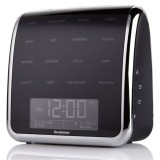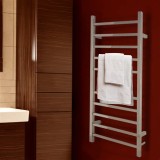Is A Warmer Screen Better For Your Eyes?
Understanding the essential aspects of screen temperature and its impact on eye health is crucial for anyone who spends extended periods in front of digital devices. Whether for work, leisure, or education, prolonged exposure to electronic screens can lead to various eye-related issues. This article delves into the essential aspects of screen temperature, particularly the potential benefits and drawbacks of using warmer screens on eye health.
Is Warmer Screen Better For Your Eyes?
The term "warmer screen" typically refers to a screen that emits less blue light and more yellow-orange light. Blue light is a type of visible light with shorter wavelengths and higher energy levels, while yellow-orange light has longer wavelengths and lower energy levels. Studies have suggested that excessive exposure to blue light may contribute to digital eye strain, sleep disturbances, and even long-term damage to the retina. On the other hand, warmer screens emit less blue light, potentially reducing the risk of these issues.
Benefits of Warmer Screens:
1. Reduced Digital Eye Strain: Warmer screens may help reduce symptoms of digital eye strain, such as dry eyes, headaches, and blurred vision. This is because blue light can cause the pupils to constrict, leading to strain and fatigue.
2. Improved Sleep Quality: Blue light can suppress the production of melatonin, a hormone that regulates sleep. Using warmer screens may reduce blue light exposure and improve sleep quality.
3. Potential Protection Against Macular Degeneration: While more research is needed, some studies suggest that blue light exposure may contribute to age-related macular degeneration (AMD). Warmer screens may reduce the risk of AMD by minimizing blue light emission.
Drawbacks of Warmer Screens:
1. Color Accuracy: Warmer screens may affect color accuracy, making them less suitable for tasks that require precise color reproduction. This could be a concern for graphic designers or photographers.
2. Reduced Brightness: Some warmer screens may appear dimmer than colder screens, which could be an issue for individuals who prefer brighter displays.
Conclusion:
The question of whether a warmer screen is better for your eyes depends on individual circumstances and usage patterns. While warmer screens may offer potential benefits in reducing digital eye strain and improving sleep quality, they may also have drawbacks related to color accuracy and brightness. Ultimately, choosing the right screen temperature involves weighing the potential benefits against any limitations based on your specific needs and preferences.

Yellow Screen Keep Your Eyes Healthy Careueyes Best Eye Protection

Yellow Screen Keep Your Eyes Healthy Careueyes Best Eye Protection

Yellow Screen Keep Your Eyes Healthy Careueyes Best Eye Protection

Night Mode Smartphone Features That Shift Your Screen To Warmer Colors Might Actually Be Worse For Sleep New Study Finds Business Insider

Yellow Screen Keep Your Eyes Healthy Careueyes Best Eye Protection

White Light Vs Yellow Which Is Better For Eyes When Reading Studying

Yellow Screen Keep Your Eyes Healthy Careueyes Best Eye Protection
How To Reduce An Iphone S Eye Strain Quora

The Best Monitor Settings For Your Eyes Asurion

Is Dark Mode Better For Your Eyes Here S What Science Says Wppool








